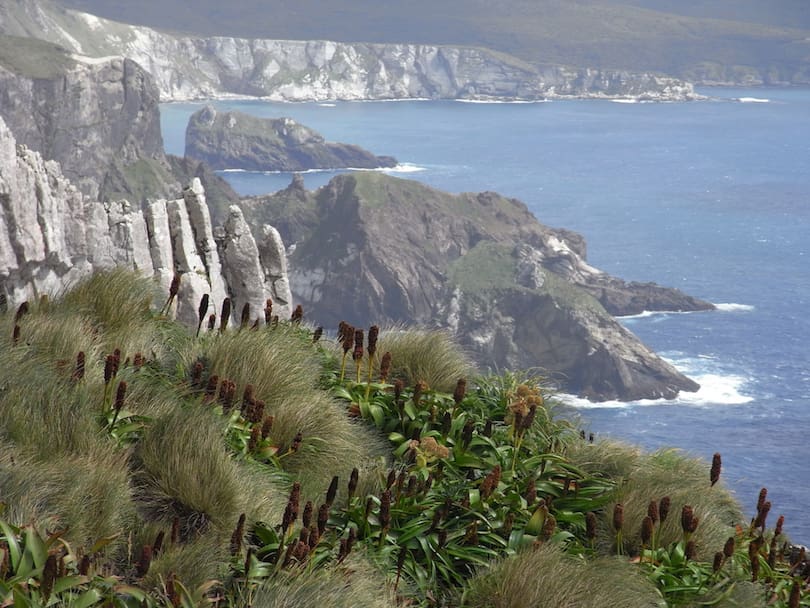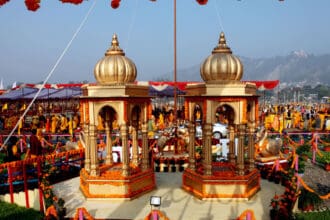Uncover the beauty and history of Devagiri Fort, Aurangabad. Delve into its rich heritage, architecture, and fascinating legends. Plan your visit to this magnificent fort and experience the awe-inspiring grandeur.
Introduction
Devagiri Fort, Aurangabad, stands as an embodiment of India’s rich history, steeped in tales of valor, grandeur, and cultural heritage. This majestic fortress, situated in the city of Aurangabad, Maharashtra, has witnessed the rise and fall of numerous dynasties over the centuries. From the Yadavas and Delhi Sultanate to the Bahmanis and Mughals, each ruler left their mark on this architectural marvel. In this article, we will take you on a virtual journey through the Devagiri Fort, Aurangabad, exploring its history, architecture, and significant attractions.
Unraveling the Legends: How Did Devagiri Fort Get Its Name?
According to local legends, the fort was originally known as “Doragira,” meaning “the hill of the gods.” Over time, the name transformed into “Devagiri,” which translates to “the hill of gods and saints.” This nomenclature is attributed to the belief that the gods and sages used to frequent the hill to meditate, making it a sacred place.
The Magnificent Architecture of Devagiri Fort, Aurangabad
The architectural brilliance of Devagiri Fort is a testament to the skilled craftsmanship of its builders. The fort is primarily built with black basalt rock, giving it a distinct appearance. The strategic layout of the fort showcases its defensive prowess, making it an impregnable stronghold during its prime.
Subhead: The Impregnable Defense Mechanisms
The fort’s layout is ingeniously designed to withstand enemy attacks. Its high walls, massive gates, and complex maze of passages provide a remarkable defense system. Strategically placed bastions and watchtowers allowed the defenders to observe and respond to any potential threats efficiently.
Subhead: The Majestic Entrance Gates
The main entrance of Devagiri Fort is adorned with a massive gate known as the “Delhi Gate.” The intricate carvings and exquisite design on the gate’s facade mesmerize visitors, reflecting the artistic brilliance of the bygone era.
Subhead: Enchanting Water Management System
The fort boasts a remarkable water management system that includes reservoirs, wells, and step-wells. Even during the driest seasons, these water sources ensured a continuous water supply for the fort’s inhabitants.
Historical Significance: Dynasties That Shaped Devagiri Fort
The history of Devagiri Fort is a tapestry woven with the rise and fall of several mighty dynasties that held sway over the region.
Subhead: The Yadavas and the Birth of Devagiri Fort
The Yadavas, a dynasty that ruled the Deccan during the 12th century, were the masterminds behind the construction of Devagiri Fort. Bhillama V, the Yadava ruler, laid the foundation of the fort in 1187 CE.
Subhead: Devagiri Fort and the Delhi Sultanate
The Delhi Sultanate, led by the powerful ruler Alauddin Khalji, captured Devagiri Fort in 1294 CE. Renaming it to “Daulatabad,” the Sultanate used it as a strategic military outpost.
Subhead: The Bahmani Sultanate: Rebirth of Devagiri Fort
The Bahmani Sultanate, a prominent dynasty in the Deccan, seized control of Devagiri Fort in 1327 CE. They undertook significant renovations and added new structures, further enhancing its grandeur.
Subhead: Devagiri Fort under the Tughlaqs and the Mughals
The Tughlaqs and later the Mughals took over the fort after the decline of the Bahmani Sultanate. They made notable additions and utilized it as an administrative center.
Exploring the Treasures Within: Key Attractions of Devagiri Fort, Aurangabad
Devagiri Fort houses several captivating attractions that transport visitors back in time.
Subhead: Chand Minar – The Towering Glory
Chand Minar, an imposing tower within the fort premises, stands as a remarkable example of Indo-Islamic architecture. With intricate carvings and decorative motifs, it served as a victory monument.
Subhead: The Immortal Chini Mahal
The Chini Mahal, also known as the Chinese Palace, is an architectural marvel with its stunning blue and green tiles. It once served as the residence of the royal ladies and exudes an aura of opulence.
Subhead: The Majestic Jami Masjid
Jami Masjid, the grand mosque within the fort, showcases a blend of Hindu and Islamic architectural elements. Its colossal prayer hall and exquisite calligraphy leave visitors awestruck.
Subhead: The Enigmatic Andheri (Dark) Passage
The Andheri Passage, a subterranean escape route, adds an element of mystery to the fort. This narrow, pitch-dark tunnel provided a covert passage for the royals during times of danger.
Subhead: The Cannons of Yesteryears
Devagiri Fort houses an impressive collection of cannons, each with its own unique history and significance. These cannons reflect the advancements in medieval warfare technology.
Plan Your Visit: Tips for Exploring Devagiri Fort, Aurangabad
A visit to Devagiri Fort, Aurangabad, is a journey through time, and proper planning can enhance the experience.
Subhead: Best Time to Visit Devagiri Fort
The ideal time to visit the fort is during the winter season (November to February) when the weather is pleasant, making it easier to explore the vast premises.
Subhead: Getting to Devagiri Fort
Devagiri Fort is easily accessible from Aurangabad city. Visitors can hire taxis, auto-rickshaws, or avail of local bus services to reach the fort.
Subhead: Exploring the Fort: Wear Comfortable Footwear
The fort requires a fair amount of walking, so wearing comfortable shoes is advisable to navigate the rugged terrain.
Subhead: Local Guides for a Richer Experience
Engaging the services of a local guide can enrich the experience by providing historical insights and fascinating anecdotes about the fort.
FAQs about Devagiri Fort, Aurangabad
- Q: Is there an entry fee for visiting Devagiri Fort? A: Yes, there is an entry fee to access the fort premises. The fee may vary for domestic and international tourists.
- Q: Can children and elderly individuals visit the fort easily? A: While the terrain can be uneven in some places, the fort is generally accessible for children and the elderly. However, caution should be exercised.
- Q: Are there any nearby accommodations for tourists? A: Aurangabad city offers various accommodation options, ranging from budget hotels to luxurious resorts, ensuring a comfortable stay for tourists.
- Q: Are photography and videography allowed within the fort? A: Yes, photography and videography are permitted. However, some sections or artifacts may have restrictions for preservation purposes.
- Q: Are there any safety measures in place for visitors? A: To ensure visitor safety, the fort authorities have installed railings and signboards at hazardous locations. It is essential for visitors to follow these guidelines.
- Q: Can one hire audio guides for a self-paced tour? A: Yes, audio guides are available for rent at the fort entrance, providing a self-paced and informative tour experience.
Conclusion
Devagiri Fort, Aurangabad, stands as a timeless testimony to India’s glorious past. Its grand architecture, rich history, and captivating legends make it a must-visit destination for history enthusiasts and curious travelers alike. By exploring the fort’s nooks and corners, one can truly immerse themselves in the splendor of ancient India. So, pack your bags, and get ready for an unforgettable journey through time at Devagiri Fort, Aurangabad.







